Vous devez être connecté
-
WróćX
-
Composants
-
-
Category
-
Semi-conducteurs
- La diode
- Les thyristors
- Modules de puissance isolés
- Ponts redresseurs
-
Transistors
- Transistors | GeneSiC
- Modules MOSFET SiC | Mitsubishi
- Modules MOSFET SiC | STARPOWER
- Modules MOSFET SiC ABB
- Modules IGBT | MITSUBISHI
- Modules de transistors | MITSUBISHI
- Modules MOSFET | MITSUBISHI
- Modules de transistors | ABB
- Modules IGBT | POWEREX
- Modules IGBT | INFINEON (EUPEC)
- Composants semiconducteurs en carbure de silicium
- Przejdź do podkategorii
- Circuits de commande
- Blocs de puissance
- Przejdź do podkategorii
- Transducteurs électriques
-
Composants passifs (condensateurs, résistances, fusibles, filtres)
- Résistances
-
Fusibles
- Fusibles miniatures pour c.imp. série ABC et AGC
- Fusible rapides tubulaires
- Cartouches de courbe GL/GG et AM
- Cartouches ultrarapides
- Fusibles à action rapide (norme britannique et américaine)
- Fusibles à action rapide (norme européenne)
- Fusibles de traction
- Cartouche de haute tension
- Przejdź do podkategorii
-
Condensateurs
- Condensateurs pour moteurs
- Condensateurs électrolitiques
- Condensateurs de type snubbers
- Condensateurs de puissance
- Condensateurs pour circuits continus
- Condensateurs de compensation de puissance
- Condensateurs de haute tension
- Condensateurs pour chauffage par induction
- Condensateurs pour impulsions
- Condensateurs DC LINK
- Condensateurs pour circuits AC/DC
- Przejdź do podkategorii
- Filtres anti-interférences
- Supercondensateurs
- Protection contre les surtensions
- Filtres de détection des émissions TEMPEST
- Przejdź do podkategorii
-
Relais et contacteurs
- Théorie relais et contacteurs
- Relais statiques triphasés
- Relais statiques CC
- Régulateurs, circuits de commande et accessoires
- Démarrages progressifs et contacteurs inverseurs
- Relais electromécaniques
- Contacteurs
- Commutateurs rotatifs
-
Relais statiques monophasés
- Relais semi-conducteurs AC monophasés, série 1 | D2425 | D2450
- Relais à semi-conducteurs CA monophasés, séries CWA et CWD
- Relais à semi-conducteurs CA monophasés des séries CMRA et CMRD
- Relais à semi-conducteurs CA monophasés, série PS
- Relais semi-conducteurs AC double et quadruple, série D24 D, TD24 Q, H12D48 D
- Relais statiques monophasés, série GN
- Relais à semi-conducteurs CA monophasés, série CKR
- Relais AC monophasés SÉRIES ERDA ET ERAA pour rail DIN
- Relais CA monophasés pour courant 150A
- Relais à semi-conducteurs doubles intégrés à un dissipateur thermique pour un rail DIN
- Przejdź do podkategorii
- Relais statiques monophasé pour c.imp.
- Relais d'interface
- Przejdź do podkategorii
- Composants inductifs
- Radiateurs, varistances, protections thermiques
- Ventilateurs
- Climatiseurs et accessoires d'armoires électriques
-
Batteries, chargeurs, blocs d'alimentation tampon et onduleurs
- Batteries et Chargeurs - théorie
- Batteries Li-ion et non-standards. Systèmes de gestion des batteries (BMS)
- Batteries
- Chargeurs de batteries et accessoires
- Alimentation de secours UPS et alimentation tampon
- Convertisseurs de tension et accessoires pour photovoltaïque
- Stockage d'Energie
- Réservoirs de carburant
- Batteries lithium-ion
- Przejdź do podkategorii
-
Automatique industrielle
- Élévateurs Spiralift
- Pièces pour drones Futaba
- Interrupteurs de fin de course, micro-rupteurs
- Capteurs et convertisseurs
- Pyromètres
- Compteurs, Relais temporisés, Indicateurs de tableau
- Appareils industriels de protection
- Signalisation lumineuse et sonore
- Caméra thermique
- Afficheurs à LED
- Boutons et commutateurs
- Przejdź do podkategorii
-
Câbles et chemins de câbles
- Fils
- Passe-câbles et coupleurs
- Fils de Litz
- Câbles pour les applications spéciales
- Gaines
-
Tresses
- Tresses plates
- Tresses rondes
- Tresses très souples - plates
- Tresses très souples - rondes
- Tresses cuivre cylindriques
- Tresses cuivre cylindriques et protection
- Bandes de mise à la terre souples
- Tresses en acier zingué et inox
- Tresses isolantes en PVC - temp. 85°C
- Tresses plates en aluminium
- Kit de liaison - tresses et gaines
- Przejdź do podkategorii
- Equipement pour la traction
- Cosses
- Barres flexible isolées
- Barre flexibles multicouches
- Systèmes de traçage des câbles
- Przejdź do podkategorii
- Zobacz wszystkie kategorie
-
Semi-conducteurs
-
-
- Fournisseurs
-
Applications
- Alimentations (UPS) et systèmes de redressement
- Automatisation HVAC
- Automatisation industrielle
- Chauffage par induction
- Composants pour atmosphères potentiellement explosives (EX)
- Dispositifs de protection industriels
- Énergétique
- Energy bank
- Équipements pour armoires de distribution, de contrôle et de télécommunications
- Impression
- Machines à souder et machines à souder
- Machines de séchage et de traitement du bois
- Machines pour le thermoformage des plastiques
- Machines-outils CNC
- Mesure et régulation de la température
- Mesure et régulation de la température
- Mines, métallurgie et fondation
- Moteurs et transformateurs
- Traction de tram et de chemin de fer
- Variateurs CA et CC (onduleurs)
-
Installation
-
-
Inducteurs
-
-
Appareils à induction
-
-
Service
-
- Contact
- Zobacz wszystkie kategorie
The use of induction heating in the manufacture of industrial equipment

Induction heating is a method of heating conductive materials that is gaining more and more popularity in industrial applications. Compared to conventional heating methods, induction heating provides the highest safety for workers through contact-free operation.
The technology is developing rapidly and there are more and more solutions and devices using it on the market. The vast majority of companies decide to switch to such a solution, due to the savings of time and money associated with heating processes.
What is induction heating?
Induction heating is a method of heating conductive materials used in the production and machining of mechanical parts or industrial machine components. The process involves placing the workpiece near an induction coil through which an alternating current is passed. As the current flows through the coil, an alternating magnetic field is generated in its field, which initiates eddy currents within the workpiece material. Unlike common heating methods, in induction the heat is not supplied from outside, but is generated in the workpiece itself. This gives many advantages for production processes, energy consumption and working conditions.
The benefits of induction heating:
- Saves energy and reduces CO₂ emissions, thanks to short heating times;
- All induction processes are easily repeatable;
- Precision heating significantly reduces scrap and rework;
- Ability to automate and integrate with other manufacturing processes;
- Even the largest induction systems take up relatively little space;
- Induction processes are easy to use;
- Each solution can be easily selected and adapted to each application.
Induction heating systems
Each induction heating system consists of an induction generator, a workstation and an induction coil. Additionally, depending on the application, peripheral devices supporting the system operation can be added, such as chillers for the coil cooling water, pyrometers for measuring the heating temperature, industrial regulators for controlling the generator operation.
Induction generators are responsible for converting input current into alternating current at a specific frequency. By selecting the appropriate power and frequency range of the generator, we can adjust the heating time and heat penetration depth of the heat-treated material, depending on the size and weight of the work insert.
Workstations are components of a heating system in which induction coils are placed. Depending on the solution, the workstation may be built into the generator or may exist as an independent part of the unit to facilitate equipment operation. In most cases, cooling water also flows through the workstation and is then directed to the heating coil.
The coil itself is the element through which heat is generated in the workpiece. By selecting the size, shape and design of the coil, we can achieve different types of heating - from spot heating to area heating. The coils are usually made of copper, because copper conducts electricity very well, and by using a cooling system, we can reduce excessive heating of the coil.
Induction heating applications
- Induction heating is used in many heating processes. The most important of these are:
- Soldering and brazing;
- Heating, bonding;
- Shrink fitting;
- Annealing, hardening, tempering and curing;
- Melting and hot forming;
- Forging;
- Stacking;
- Sealing;
- Glaze removal;
- Material testing.
Except for the aforementioned applications, induction heating is used in high-tech applications where specific standards and high hygiene are required, e.g. medical applications (nanoparticle technology), chemical industry, etc.
Produits associés
Articles similaires
 Now available – DC/DC converters from PREMIUM
Now available – DC/DC converters from PREMIUM
 New release in DACPOL lighting for lathes – Kira covers
New release in DACPOL lighting for lathes – Kira covers

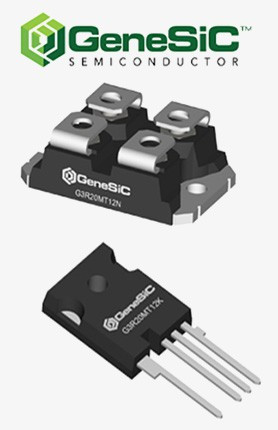
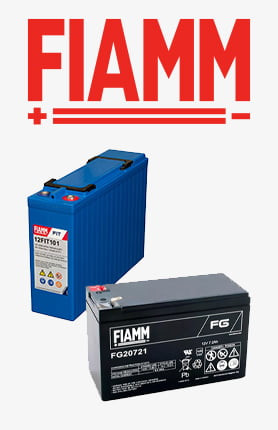
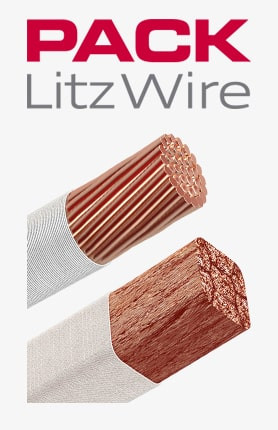
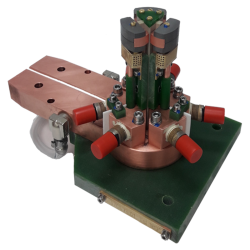
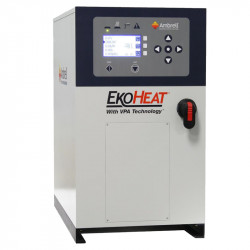
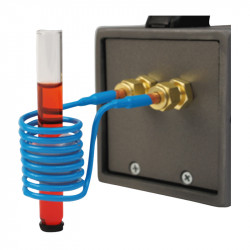
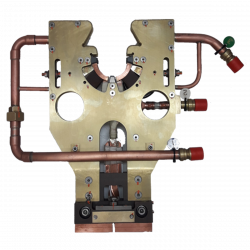
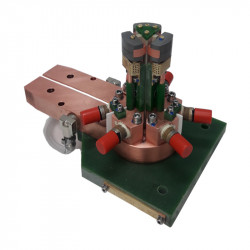
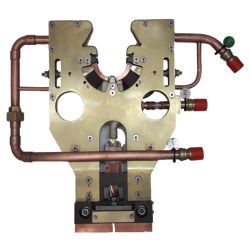
Laissez un commentaire